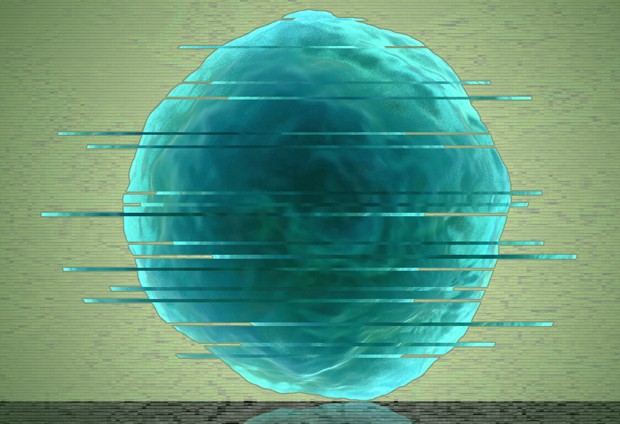
Read the latest Issue
The rapid rise of high-resolution 3D cellular imaging techniques in biology demands data solutions – and EMBL is there to provide them.

As the bioimaging revolution gives scientists ever-more detailed views on the inner workings of cells, there is growing demand for public infrastructure to store, share and link the massive datasets produced using high-resolution imaging techniques. Complementing large-scale, EMBL-led, intergovernmental initiatives such as Euro-BioImaging, EMBL-EBI has expanded its EMPIAR data service to accommodate new high-resolution imaging modalities such as Scanning Electron Microscopy (SEM). A correspondence published in Nature Methods today introduces the resource and gives a glimpse of future developments.
EMPIAR, EMBL-EBI’s global public data resource for raw 2D images, provides valuable data for developing new approaches to data processing, interpretation and validation – all essential activities for archiving and quality control.
“The raw image data archived in EMPIAR is very useful for many things, including making original data related to controversial studies available publicly,” explains Gerard Kleywegt, Head of Molecular and Cellular Structure services at EMBL-EBI.
EMPIAR enables us to gain an increasingly precise view on the processes of life.
EMPIAR, part of the Electron Microscopy Data Bank (EMDB) at EMBL-EBI, is designed to handle very large datasets: the average entry is around 700 Gigabytes, and the largest is over 6 Terabytes. Recent datasets include four related 3D SEM entries showing different stages of infection of a red blood cell by a malaria parasite. EMPIAR is currently the only way to archive these data and make them available to other scientists.
“EMPIAR allows us to share big raw datasets,” says John Briggs of EMBL, whose group develops and applies advanced cryo-electron microscopy techniques to study enveloped viruses such as HIV. “These can then be looked at by other labs that might be interested in other aspects of the data, or used for testing or comparing new image-analysis pipelines.”
“EMPIAR is an exemplar of a very timely, community-driven archiving initiative, and fits perfectly with our mission to provide services that support life-science discovery,” says EMBL Director General Iain Mattaj. “It supports cutting-edge imaging methods such as those developed at EMBL by giving a home to the data, and allowing the community to refine their interpretation. This enables us to gain an increasingly precise view on the processes of life.”
The EMPIAR team is working on ways to accommodate other imaging modalities, for example soft X-ray tomography – which bridges the scale and resolution gap between light microscopy and electron tomography – and Correlative Light and Electron Microscopy (CLEM).
“In CLEM, researchers use fluorescent tags to detect interesting events in a cell, then take a closer look using high-resolution EM,” says Ardan Patwardhan, Coordinator in EMBL-EBI’s Protein Data Bank in Europe team. “We are working with pioneers in this field to find the best way to store and correlate these data types, which will provide a very powerful tool for research.”
EMPIAR, EMBL-EBI’s global public data resource for raw 2D images, is funded by the Medical Research Council (MRC), Biotechnology and Biomedical Science Research Council (BBSRC) and Wellcome Trust to support the archiving and dissemination of biomaging data on 3D molecular and cellular structures created with new and emerging technologies. EMPIAR provides raw 2D data for datasets submitted to the EMDB, and is managed by the Protein Data Bank in Europe team at EMBL-EBI.
This post was originally published on EMBL-EBI News.
Looking for past print editions of EMBLetc.? Browse our archive, going back 20 years.
EMBLetc. archive